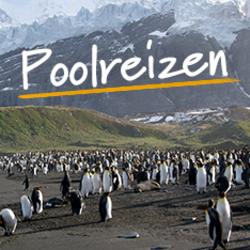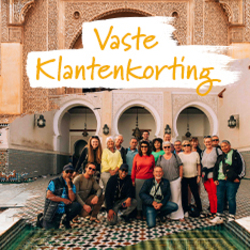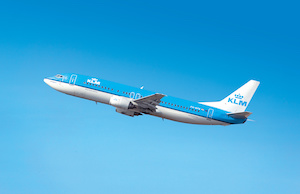Activities
- Culture
- Cultural Wonders
- Explore the ancient sites of Mystras and Delphi. Visit Olympia, the site of the first Olympic Games. Enjoy spectacular Meteora- 'columns in the sky'
Food
-
1
Start Athens.
There are no included activities today so you are free to arrive in Athens at any time. The group flight usually arrives in Athens in the early afternoon. Accommodation: Arion Hotel or similarComfortable Hotel
-
2
Morning walking tour of Athens, including the Acropolis, the Museum of Acropolis and Plaka; afternoon free to explore Athens.
This morning there is a walking tour of Athens, the historical capital of Europe, and the birthplace of democracy, dating back to the Neolithic Age. The archaeological sites of major interest that we will visit include the Acropolis and the Museum of Acropolis, also known as the city’s historical centre. This walk is actually a journey through history itself, where you will see classic ancient history, architectural evolution, and the city’s development until the 21st century (Classic period, Romaic period, Byzantine, Ottoman occupation, Neoclassic times, and 20th century).The afternoon is free for you to continue to explore Athens on your own, your leader will be able to suggest where to visit. Please note: During busy periods, the walking tour might take place in the afternoon when it is quieter and the morning will be free. Accommodation: Arion Hotel or similarComfortable Hotel
-
3
To Nafplio, visiting Ancient Corinth and Mycenae en route.
After breakfast, we will depart to Nafplio. On the way, we will stop at the impressive Corinth Canal, which separates the Peloponnese from mainland Greece and connects the Gulf of Corinth with the Aegean Sea. We will then visit the archaeological site of Ancient Corinth, which was one of the major cities in antiquity and an important trade centre. Located at the northern foothills of the Acrocorinth hill, around the Archaic Temple of Apollo, the site was first inhabited in the Neolithic period (6500-3250 B.C.). Extended excavations have revealed the Roman Forum, temples, fountains, porticoes, baths, latrines, and various other monuments. We will also stop to admire the remarkable castle of Acrocorinth, one of the largest, if not the largest in Greece, located on the hill above Ancient Corinth, overlooking the ancient city. We will then continue on to the archaeological site of Mycenae, the kingdom of mythical Agamemnon, and the most important and richest palatial centre of the Late Bronze Age in Greece. The archaeological site of Mycenae comprises the fortified acropolis and surrounding funerary and habitation sites, which are located mainly to its west and southwest. Most of the visible monuments date to the centre's great flourishing period from 1350 to 1200 BC. Huge impressive Cyclopean walls surround the acropolis, which is accessed through the famous Lion Gate, a symbol of the Mycenaean rulers' power. The palace, a symbol of the power of Mycenaean rulers, dominates the citadel's highest point. We will continue to the picturesque town of Nafplio where we will spend the night. Accommodation: Rex Hotel or similarComfortable Hotel
-
4
Morning visit to the fortress of Palamidi; afternoon explore Ancient Epidavros.
Today we will visit the impressive Venetian fortress of Palamidi, overlooking the town. This fortress was initially fortified by the Venetians during the second Venetian occupation of the area (1686-1715). In 1715 it was captured by the Turks and remained under their control until 1822, when it was liberated by the Greeks. The most important monuments of the site that we’ll visit are the castle, the church of St. Andrew, and the prison of “Kolokotronis”, a hero of the Greek Revolution.Next, we will explore Ancient Epidavros (approx. 45min drive from Nafplio), where the Sanctuary of the god-physician Asclepius, the most famous healing centre of the Greek and Roman world, is found. Besides the sanctuary of Asclepius, we’ll also visit the Ancient Theatre of Epidaurus, one of the greatest monuments of Ancient Greece. It is the finest and most renowned of its kind, perfectly combining acoustics with elegance and symmetrical proportions. In the afternoon we will make our way to the town of Sparta, once a powerful city in ancient times, where we spend the night. Accommodation: Lakonia or Maniatis Hotel or similarComfortable Hotel
-
5
Morning explore the UNESCO World Heritage site of Mystras; afternoon to Pylos, visiting Ancient Messene en route.
This morning we visit Mystras, the ‘Wonder of the Morea’, the most famous castle and medieval town in Greece and a UNESCO Worldwide Heritage Site. Mystras occupies a steep foothill on the northern slopes of Mt. Taygetos, dating back to the 13th century. It is a Frankish castle that after 1262 came under Byzantine control and in the middle of the 14th century became the seat of the Despotate of Moreas. In 1460 it was captured by the Turks, but it was liberated again in 1821. It was actually one of the first castles to be liberated during the War of Independence. We will explore the site on foot, including several beautiful Byzantine churches with different architecture, most of them built between the 12th and 15th centuries, the palaces of the Mystras Despots, and some urban buildings. Unfortunately, the castle itself is closed for reconstruction so we are unable to visit it. In the afternoon, we will head towards Ancient Messene, one of the finest and best restored, yet still relatively unknown, archaeological sites in Greece. Lying in a fertile valley, below Mt Ithomi, in Central Messenia, the site was first inhabited during the Late Neolithic or the early Bronze age. Amongst the site’s monuments, we will visit the ancient theatre, the agora, and the Asclepeion. The stadium and the gymnasium are among the most impressive and well-preserved building complexes in Ancient Messene and are sure to captivate you. We will then drive to the seaside town of Pylos, where we will spend the night. Accommodation: Hotel Karalis or similarComfortable Hotel
-
6
Morning, explore the Castle of Pylos; to Olympia or Katakolo.
After breakfast, we will visit the Castle of Pylos, which also hosts a fine exhibition and museum of underwater antiquities. Here you will find out more about underwater archaeology in Greece, how research, excavations, and preservation of the antiquities take place. You will also see some contents from shipwrecks found in the sea near Peloponnese and Ionian islands.After lunch, we’ll drive all the way along the west coastline of the Peloponnese towards Olympia where we spend the night (approx. 2 hrs drive).Accommodation: Hotel Pelops or similarComfortable Hotel
-
7
Explore Ancient Olympia, the site of the first Olympic Games.
After breakfast, we visit Ancient Olympia, the site that hosted the first Olympic Games. Dedicated to Zeus, the father of the gods, at the confluence of two rivers, in a lush, green landscape, near the west coast of the Peloponnese, Olympia is the most important religious and athletic centre in Ancient Greece. We will explore this major archaeological site, which includes the sanctuary of Zeus and the many buildings erected around it, such as an athletic premises used for the preparation and celebration of the Olympic Games, administrative buildings, and other lay buildings and monuments (the Temple of Hera, the Council House, the Ancient Stadium and Gymnasium, the Altar of Zeus). After lunch, we will drive (approx. 3.5 hrs) to Delphi where we will spend the night. En route, we will cross from the Peloponnese peninsula to mainland Greece and will have the chance to admire the cable-stayed bridge of “Rio–Antirrio”, a masterpiece of architecture! Accommodation: Nidimos Hotel or similarComfortable Hotel
-
8
Morning explore the UNESCO World Heritage site of Delphi; afternoon visit Arachova on the slopes of Mount Parnassus; to Meteora.
In the morning, we will head to the UNESCO Worldwide Heritage Site of Delphi. We will explore this magnificent archaeological site on foot, the place that in ancient times was considered the centre of the world, the place where heaven and earth met. The history of Delphi dates back to prehistoric times when the myths of the ancient Greeks took place. According to mythology, it is here that the two eagles sent out by Zeus from the ends of the universe to find the navel of the world met. The sanctuary of Delphi, set within a spectacular landscape, on the slopes of Mount Parnassos, was for many centuries the cultural and religious centre and symbol of unity for the Hellenic world. Once at the archaeological site, we’ll have the chance to visit the Temple of Apollo, the Treasury of the Athenians and of the Siphnians, the ancient theatre, stadium and the ancient gymnasium as well as the Castalian spring that was considered the sacred source of Delphi. We’ll have lunch in the mountainous town of Arachova, on the slopes of Mount Parnassus, one of the most picturesque and well-known winter destinations in Greece. We will have the chance to taste some of the local products, such as “formaella” cheese, produced only in Arachova. Please note, sometimes lunch might need to be taken en route to Meteora depending on the time of year. After lunch, we head northeast to the UNESCO Worldwide Heritage Site of Meteora (approx. 4 hrs drive). Meteora is one of the largest Greek Orthodox communities in Greece, second only to Mount Athos. Situated over the town of Kalampaka, on the north-western edge of the Plain of Thessaly (in Central Greece), Meteora is one of the most imposing sights in Greece and a must-see for everyone visiting the country. Sandstone steep rocks, rising over 400 metres above the ground, were formed about 60 million years ago, as a result of fluvial erosion, earthquakes and geological changes that followed over the centuries, and created this rare natural phenomenon and landscape. Besides being a marvel of nature, what makes Meteora even more astonishing are the monasteries spectacularly perched atop the rocky pinnacles. We aim to arrive in Meteora late afternoon, going to several viewpoints where we can enjoy panoramic views over Kalampaka plain and the stone forest of Meteora. Accommodation: Hotel Meteoritis or similarComfortable Hotel
-
9
Explore the UNESCO World Heritage site of Meteora; afternoon to Athens and end.
After breakfast, we will visit one of the cliff–top monasteries of Meteora and learn more about their history and monastic life. The area of Meteora was initially inhabited by monks who lived in caves within the rocks during the 11th century. In the late 12th century, a small church called the Panaghia Doupiani was built at the foot of one of the rocks, but during the Turkish occupation it became less secure so the monks climbed higher and higher up the rocks to protect themselves from different conquerors. Numerous monasteries were systematically built on top of the rocks so by the end of the 15th century there were 24 constructed in total; today only 6 of them are still active. The monks had to climb up ladders or use baskets and ropes to transfer the material for the construction of these monasteries and until 1920 this was the only means for getting supplies. After lunch, we’ll return to Athens (approx. 4 or 4.5 hrs drive) where our adventure will end. Those on the group flights will be transferred to the airport in time for their flight to London.





































